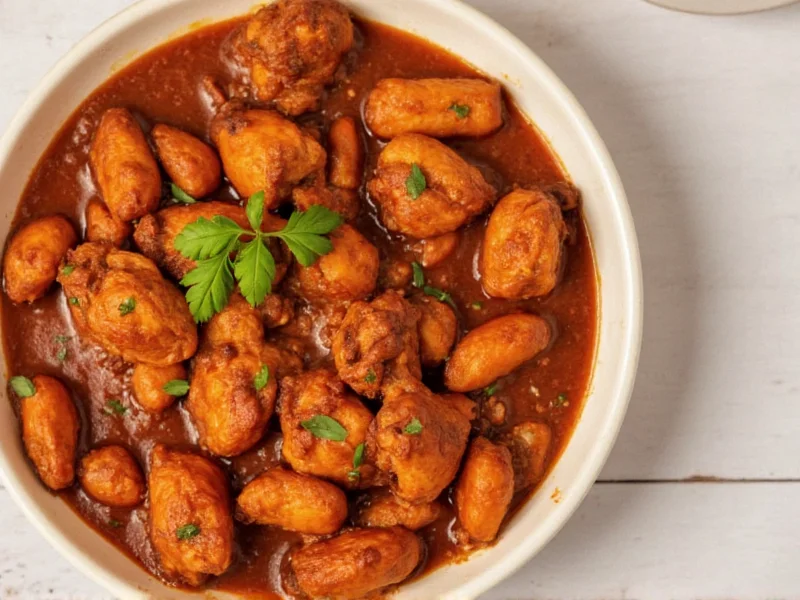Understanding the relationship between chicken dishes and the Scoville scale requires clarifying a common misconception. The Scoville Organoleptic Test, developed by pharmacist Wilbur Scoville in 1912, measures capsaicin concentration in chili peppers—not in meat products. Chicken, being a protein source with no inherent capsaicin, registers at 0 Scoville Heat Units (SHU). The confusion arises when discussing spicy chicken preparations where peppers or hot sauces are incorporated into recipes.
What the Scoville Scale Actually Measures
The Scoville scale quantifies the pungency (spiciness or heat) of chili peppers and other spicy foods by measuring capsaicinoid concentration. Originally determined through human taste panels, modern testing uses high-performance liquid chromatography (HPLC) for precise measurement. Results are expressed in Scoville Heat Units (SHU), with higher numbers indicating greater heat intensity.
When evaluating chicken dishes for heat level, we're actually measuring the peppers or sauces added during preparation—not the chicken itself. A buffalo chicken wing's heat comes from the cayenne pepper-based sauce (30,000-50,000 SHU), not the poultry.
Common Peppers Used in Chicken Dishes and Their Scoville Ratings
| Pepper Variety | Scoville Heat Units (SHU) | Common Chicken Dish Applications |
|---|---|---|
| Paprika | 100-500 | Smoked paprika chicken, Hungarian chicken paprikash |
| Jalapeño | 2,500-8,000 | Jalapeño popper stuffed chicken, southwestern chicken salads |
| Cayenne | 30,000-50,000 | Buffalo chicken wings, cayenne-rubbed grilled chicken |
| Habanero | 100,000-350,000 | Habanero mango chicken, Caribbean jerk chicken |
| Ghost Pepper (Bhut Jolokia) | 855,000-1,041,000 | Extreme challenge chicken wings, ghost pepper chicken tacos |
| Carolina Reaper | 1,400,000-2,200,000 | Specialty hot chicken challenges, limited-menu spicy chicken dishes |
Creating Chicken Dishes with Controlled Heat Levels
Professional chefs and home cooks can precisely control the heat level of chicken dishes by understanding how different preparation methods affect perceived spiciness. Several factors influence the final heat intensity:
- Pepper selection: Choosing specific varieties with known Scoville ratings provides baseline control
- Seed and membrane removal: Most capsaicin concentrates in seeds and inner membranes
- Cooking technique: High-heat cooking can break down some capsaicin compounds
- Fat content: Creamy components like yogurt or cheese can mitigate perceived heat
- Acidity balance: Citrus elements can enhance or modify heat perception
For authentic Nashville hot chicken—a dish often mistakenly associated with Scoville ratings—the heat level depends entirely on the cayenne pepper mixture applied after frying. Traditional versions range from 3,000-8,000 SHU (medium) to specialty preparations exceeding 100,000 SHU (extreme).
Measuring the Heat of Your Chicken Dish
While home cooks can't precisely measure the Scoville units of their chicken creations, they can estimate heat levels through several practical methods:
- Ingredient calculation: Sum the estimated SHU contribution of each spicy ingredient
- Dilution factor: Account for how much the pepper content disperses throughout the dish
- Comparative tasting: Reference known Scoville levels of commercial sauces used
- Heat progression assessment: Note whether heat hits immediately or builds over time
Food scientists note that the perceived heat of chicken dishes varies significantly based on individual tolerance, accompanying ingredients, and even the temperature of the dish. A chicken curry containing 50,000 SHU worth of peppers might feel milder than a wing sauce at 30,000 SHU due to the cooling effect of coconut milk in the curry.
Safety Considerations for High-Heat Chicken Preparations
Working with extremely hot peppers for chicken dishes requires proper safety precautions. Capsaicin can cause severe irritation to skin and eyes. Professional kitchens handling peppers above 100,000 SHU typically require:
- Nitrile gloves (latex doesn't block capsaicin)
- Safety goggles
- Well-ventilated work areas
- Dedicated cutting boards and utensils
Consumers attempting ultra-spicy chicken challenges should understand their limits. Peppers above 500,000 SHU can cause physical distress including nausea, sweating, and temporary breathing difficulties. Restaurants offering extreme heat chicken dishes typically require customers to sign waivers acknowledging the risks.











 浙公网安备
33010002000092号
浙公网安备
33010002000092号 浙B2-20120091-4
浙B2-20120091-4